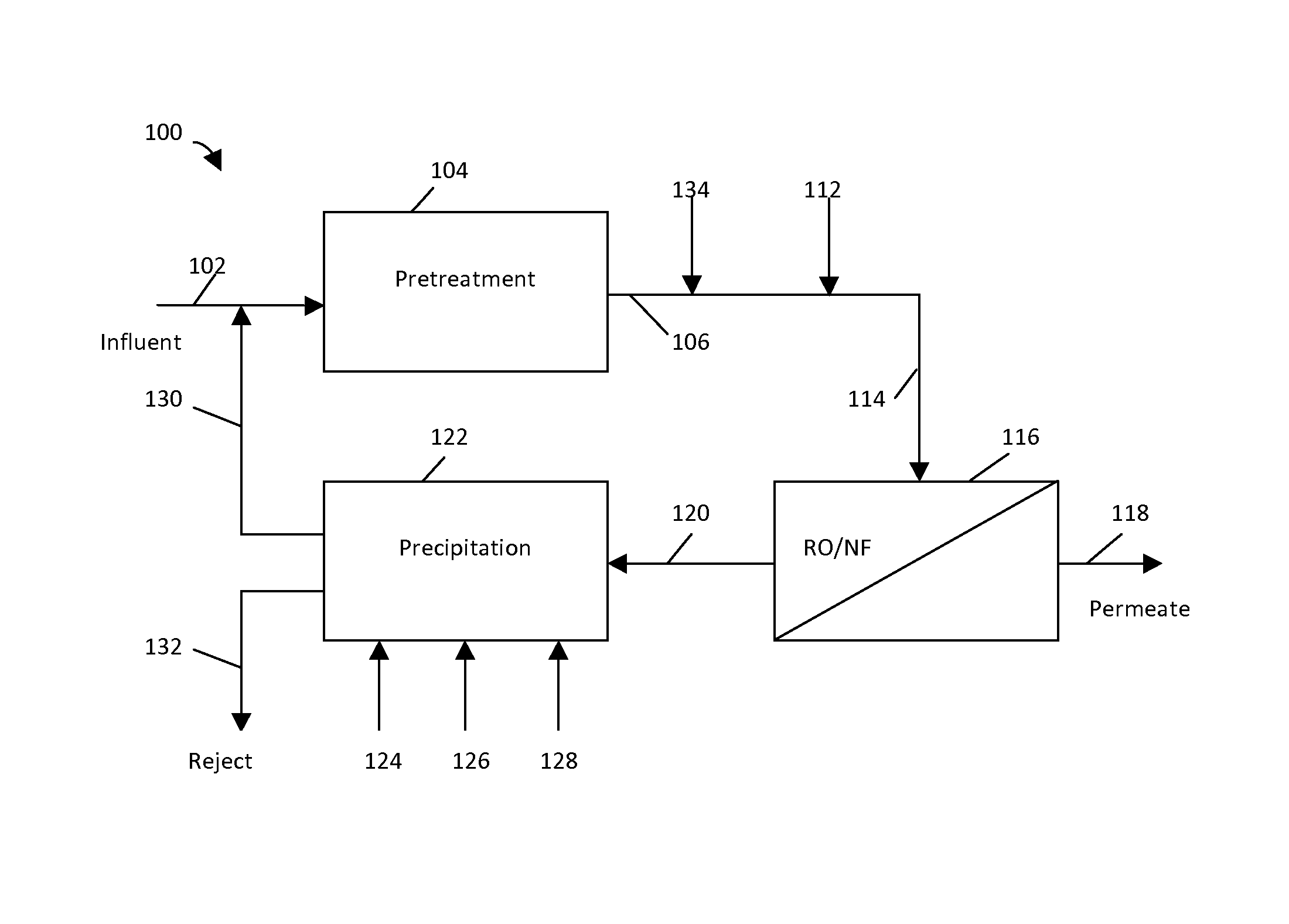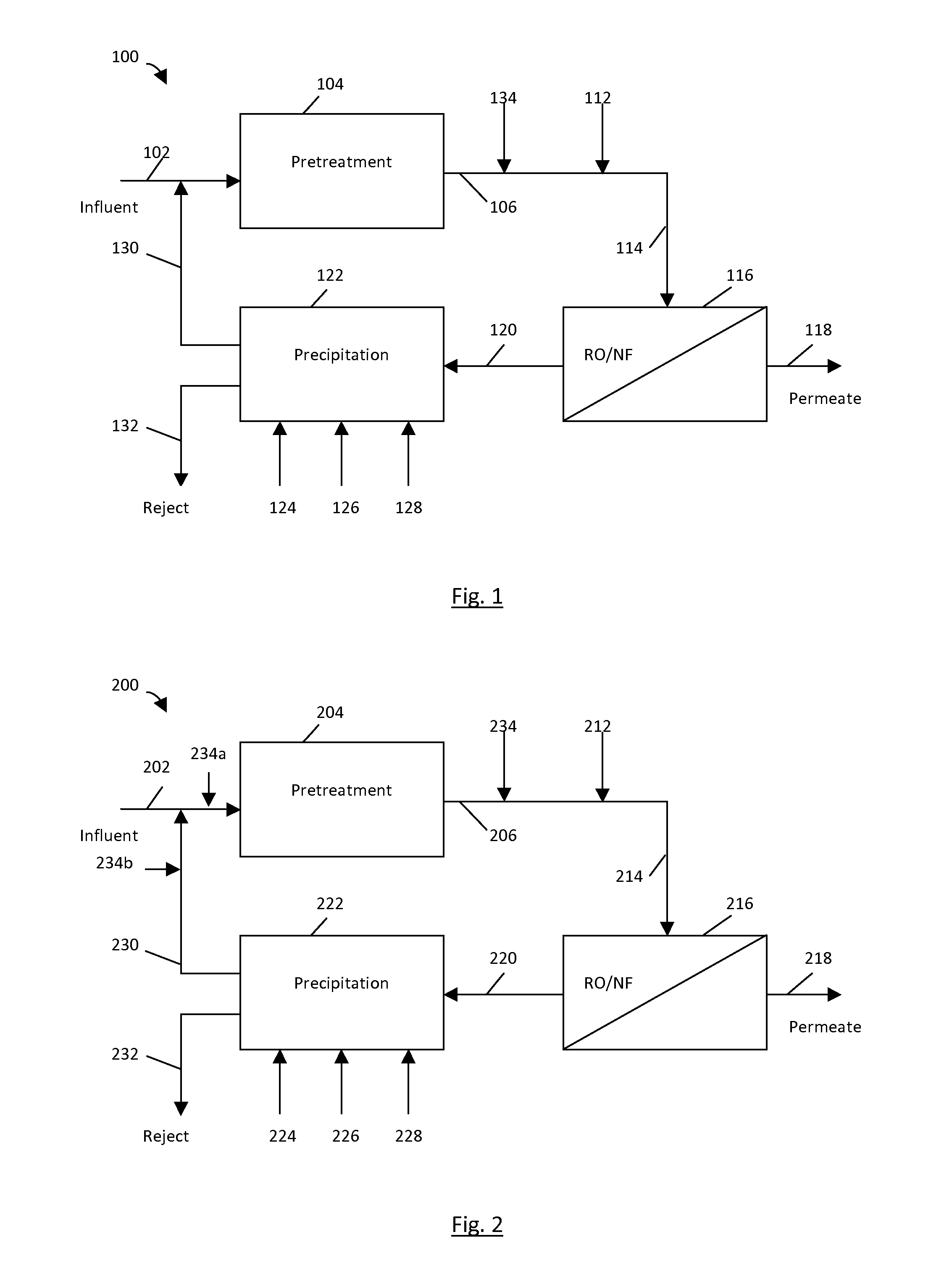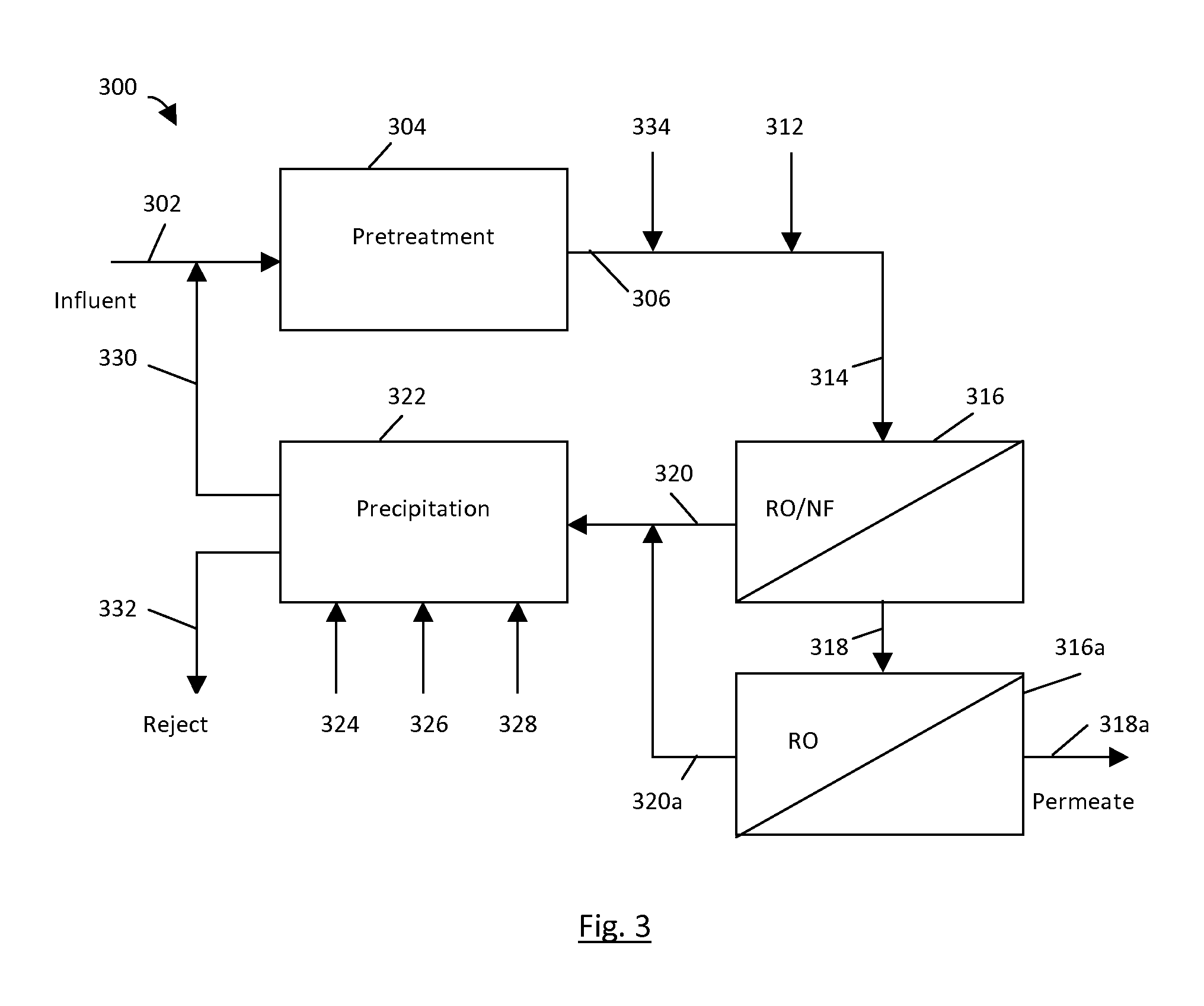Membrane filtration process with high water recovery
a membrane filtration and high water recovery technology, applied in the direction of membranes, separation processes, multi-stage water/sewage treatment, etc., can solve the problems of large amount of membrane concentrate (or “reject”) to be further treated or disposed of at a high cost, and the efficiency and water recovery is often limited
- Summary
- Abstract
- Description
- Claims
- Application Information
AI Technical Summary
Benefits of technology
Problems solved by technology
Method used
Image
Examples
Embodiment Construction
[0012]Referring to FIG. 1, an example of a filtration apparatus is shown generally at 100. The filtration apparatus 100 includes an influent solution 102. The influent solution 102 is introduced to a pretreatment chamber 104. The pretreatment chamber 104 includes suitable means effective to remove suspended solids from the influent solution 102, using ultrafiltration, microfiltration or multimedia filtration, for example.
[0013]After pretreatment, pH of the pretreated solution 106 is adjusted to at least about 8.3 or lower by injecting CO2 134. Optionally, an anti-scalant agent 112 can be added to prevent membrane scaling. Examples of anti-scalant agents include polyacrylic acids, hydrolyzed polymaleic anhydride, acrylic or maleic acid based copolymer and terpolymer, and metal sequestering agents such as ethylenediaminetetraacetic acid (EDTA), sodium hexametaphosphate (SHMP), 1-hydroxyethylidene-1,1-diphosphonic (HEDP), and 2-phosphonobutane-1,2,4-tricarboxylic acid (PBTC).
[0014]Afte...
PUM
| Property | Measurement | Unit |
|---|---|---|
| pH | aaaaa | aaaaa |
| pH | aaaaa | aaaaa |
| concentration | aaaaa | aaaaa |
Abstract
Description
Claims
Application Information
 Login to View More
Login to View More - R&D
- Intellectual Property
- Life Sciences
- Materials
- Tech Scout
- Unparalleled Data Quality
- Higher Quality Content
- 60% Fewer Hallucinations
Browse by: Latest US Patents, China's latest patents, Technical Efficacy Thesaurus, Application Domain, Technology Topic, Popular Technical Reports.
© 2025 PatSnap. All rights reserved.Legal|Privacy policy|Modern Slavery Act Transparency Statement|Sitemap|About US| Contact US: help@patsnap.com



